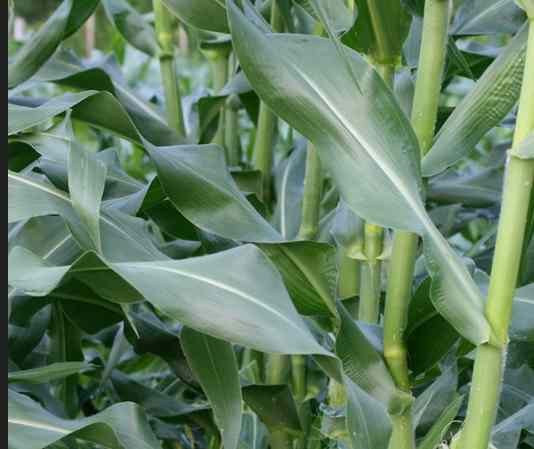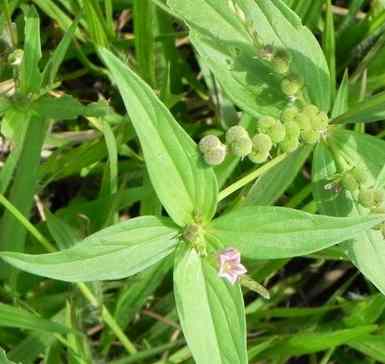
support@yorubalibrary.com
+2348073529208, 07038599574

This leave is very potent for Yoruba incantation. Elders often make a statement that: "Ase Ina ni ina fi n jo, ase oorun ni oorun fi n ran, Abamoda kii da tire ko ma se". The word "Abamoda" in this context is referring to this leaf exactly.
Ewe Abamoda is a well-known medicinal plant used across Yoruba land for treating a wide range of ailments. Recognized for its ability to treat infections, reduce inflammation, and support wound healing, this leaf is a trusted remedy in traditional Yoruba medicine. Abamoda is often found in home gardens, herbal markets, and forest areas, and is used fresh or prepared into herbal mixtures. It is especially valued for its role in treating spiritual and physical conditions, including fever, ulcers, coughs, and convulsions.
This post explains everything you need to know about Abamoda — from its native names to its healing power — so that both herbal enthusiasts and natural health seekers can understand its relevance and apply its benefits correctly.
Key Facts
Category: Leaf
Botanical Name: Bryophyllum pinnatum
Common Name: Life Plant / Miracle Leaf / Air Plant
Yoruba name: Ewe Abamoda
Igbo Name: Nil
Hausa Name: Nil
Characteristics of Abamoda Leaf
• Appearance:
The leaves are thick, fleshy, and green with scalloped edges. They can grow new baby plants (plantlets) along the leaf edges, which makes the plant reproduce easily.
• Growth:
It is a fast-growing succulent plant, often found in tropical areas. It grows in bushes or gardens and doesn’t require much attention.
• Smell:
Mild, fresh scent when crushed.
• Texture:
Smooth, soft, and succulent, storing a lot of water in its leaves.
Traditional and Medicinal Uses in Yoruba Land
1. Treatment of Wounds and Burns
Fresh Abamoda leaves are crushed and applied to open wounds, cuts, or burns to promote fast healing. It helps stop bleeding and prevents infections.
2. Cough and Chest Problems
The leaf is boiled and taken as tea to relieve cough, bronchitis, chest congestion, and asthma-like symptoms.
3. Ulcer Treatment
Abamoda juice is used for treating internal ulcers and stomach pain. It soothes inflammation and supports gut healing.
Want to treat common ailments such as Malaria, Cough, Measles, Typhoid, Pile etc naturally without spending much? Grab a copy of Authentic Herbal Solutions: 15 Common Ailments & Their Natural Cures. A practical eBook recommended for everyone regardless of tribe, religion or association. Order below or Download sample here
AUTHENTIC HERBAL SOLUTION #4KOne Yoruba proverb says "Bí olóde ò kú, òde rè kì í wu Gbégi". Do you know that Gbégi is actually a leaf/plant? Get Yoruba Proverbs on Plants and Herbs, which is a collection of Untold Wisdoms Hidden in Leaf and plants comprising their Life Applications & Moral Teachings. Order below or download sample here
YORUBA PROVERBS ON PLANTS #4K4. Convulsions in Children (Gìrì)
Yoruba herbalists use it to reduce convulsions by squeezing the juice into the child’s nostrils or giving a small dose orally, under strict traditional guidelines.
5. Fever and Malaria
Combined with other leaves like ewe akoko, ewe efinrin, and ewe bomubomu, it is used in steam therapy or taken as decoction to treat fever and malaria.
6. Toothache Relief
Warm Abamoda juice is applied directly to the affected tooth or gum to reduce pain and fight infection.
7. Kidney Stones and Urinary Issues
The leaf is known for helping dissolve kidney stones when the juice is taken regularly in small quantities.
Healing Properties of Abamoda Leaf
• Anti-inflammatory – reduces swelling and redness
• Antibacterial & Antiviral – fights infections in the body
• Antiseptic – cleans wounds and prevents microbial growth
• Diuretic – promotes urination, helping cleanse the kidneys
• Analgesic – reduces pain naturally
• Immuno-boosting – supports the body’s natural healing process
Conclusion
Ewe Abamoda (Bryophyllum pinnatum) is a vital herb in Yoruba traditional medicine, valued for its wide range of healing properties and practical uses. From wound healing to respiratory relief and kidney support, this leaf offers natural solutions that have stood the test of time. Its ease of growth and accessibility make it a popular choice for both home remedies and professional herbalists. Understanding and utilizing Ewe Abamoda can provide effective, natural care for many common ailments, preserving an important part of Yoruba herbal heritage.
Have you heard of our Yoruba Herb Dictionary? This contains names of Yoruba Leaf, Roots, Barks, Characteristics, Properties & Identification with HD Pictures. Order below or download sample here
A-Z HERBS & LEAF DICTIONARY #4K
Know more about the Yoruba traditional uses and he…

Learn about Ewe Aran, a potent Yoruba medicinal le…